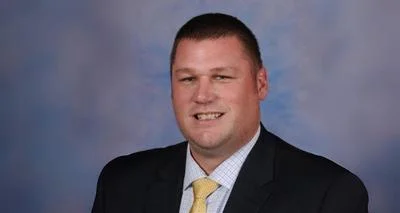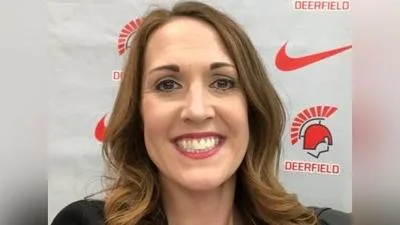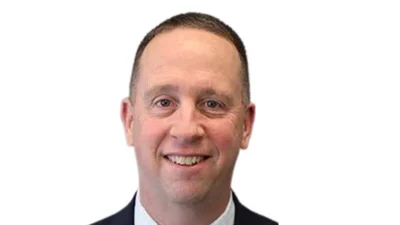Lake Forest Plan Commission met Wednesday, Jan. 11.
Here is the agenda as provided by Lake Forest:
The City of Lake Forest
Plan Commission
Proceedings of the January 11, 2017 Meeting
A meeting of the Lake Forest Plan Commission was held on Wednesday, January 11, 2017, at 6:30 p.m., at City Hall, 220 E. Deerpath, Lake Forest, Illinois.
Commission members present: Chairman Ley, Commissioners Michael Freeman, Lloyd Culbertson, Monica Ruggles, Guy Berg and Rosemary Kehr
Commissioners absent: Commissioner Henry
Staff present: Catherine Czerniak, Director of Community Development
1. Introduction of Commissioners and staff.
Chairman Ley introduced the members of the Commission and City staff.
2. Consideration of the minutes of the December 14, 2016 meeting.
Consideration of the minutes was postponed.
3. Preliminary Discussion: Consideration of updates to Chapter 159.150, Wireless Service Facilities.
Introduction: City staff
Chairman Ley asked for any conflicts of interest or Ex Parte contacts, hearing none; he invited a presentation from staff.
Ms. Czerniak introduced the proposed Code amendment noting that unlike other sections of the Code which are presented with corrections, language clarifications and limited updates, this section is presented with a recommendation for a more substantial re-write. She explained that in 2012, a technical advisory committee spent several months reviewing information on wireless facilities and presented the proposed amendments as an outcome of the group’s study. She stated that as part of the overall City Code review that is now underway, the recommendations of the technical group are now brought forward for consideration. She reviewed the basic themes that came out of the work of the technical advisory committee: assuring high quality consistent wireless service in the community, allowing companies to build out their systems as provided for by law and minimizing visual blight that can result from telecommunication facilities. She explained that the proposed amendments are directed at broadening opportunities for co-location, location of antennas on existing buildings and structures in a manner that is not visually obtrusive. She added that in the proposed amendments, the overlay districts are more clearly defined that in the current version. She reviewed each overlay district and identified the location within the community. She stated that the overlay districts remain in the same locations as originally established in 1997 except that colocation, antennas on existing structures, is permitted more broadly in an effort to limit the need for new towers. She stated that the overlay districts as originally approved have proven to serve the community well and have allowed wireless companies to build out their communication systems. She noted however that with the amount of data currently being used, the existing facilities are not sufficient to meet capacity needs. She added that the community benefits from wireless facilities in other communities located near the perimeter of the City. She noted that the proposed amended language puts a greater burden on tower building companies and wireless providers to clearly demonstrate that co-location on existing structures is not possible before the City will consider approving a new tower or monopole. She stated that the language is also intended to allow systems to build out in a manner that is as minimally visually intrusive as possible and in a manner that more fully screens existing facilities as they are modified or expanded in the future. She noted the 191 Deerpath building is an example of roof top antennas that were not effectively screened. She stated that in recent years, the area near Everett and Waukegan Roads has been identified as an area where additional wireless facilities are needed. She noted that in 2012 or 2013, the Commission heard a request for approval of a new monopole in the parking lot of the Private Bank. She noted that the initial reception of the request was not positive and the request was not pursued by the petitioner. She said that staff is aware that continued discussions have occurred between some tower building companies and wireless providers, and private property owners in the area but to date, no new petitions for a new tower in this area have been brought forward. She stated that the technical committee recommended that if it is demonstrated satisfactorily that a new tower is needed, efforts should be made to locate the tower in an area that is not a primary view corridor, and in an area where other utility poles and equipment are already located. She noted that there are City owned properties in the Everett and Waukegan Roads area, the train station and fire station properties, which may be worth considering if it is demonstrated that a tower is needed in this area. She explained that identifying a site as an overlay district does not authorize construction of a tower, but could direct providers to a certain area and the Code establishes criteria that would need to be satisfied in order to support approval of any particular petition. She stated that the proposed Code amendments are presented to the Commission for initial discussion, not action, at this time.
In response to questions from Chairman Ley, Ms. Czerniak clarified that when the overlay districts were originally established in 1997, the purpose was to narrowly define areas within which wireless facilities could be located. She stated that a similar approach could be taken in the Everett and Waukegan Roads area. She added that sites located west, near the Tollway, would likely not meet the need that has been identified. She stated that even within an overlay district, the Code could require a Special Use Permit for a new tower.
In response to questions from Commissioner Freeman, Ms. Czerniak reviewed the overlay districts in the vicinity of the former Barat Campus. She acknowledged that the colocation overlay district made more sense when the Old Main building was still standing.
She confirmed that several antennas were located on the chimneys of Old Main and were displaced when that building was demolished. She explained that the technical advisory committee anticipated that one or more new buildings might someday be located on the site and provided the opportunity for co-location on those buildings by retaining the overlay district. She noted that the location of a smaller overlay district that was added to allow the location of a new monopole on the Woodlands Academy Campus to accommodate the wireless providers previously located on the Old Main building, and to make space for others. She confirmed that in the Everett and Waukegan Roads area, the feasibility of locating wireless facilities on the taller elements of the Church and fire station was considered, but to date, determined not to be workable.
In response to questions from Commissioner Culbertson, Ms. Czerniak agreed that possible locations for a new tower, at the perimeter of the City, could be identified as preferred sites and the burden would be on the wireless providers and tower building companies to demonstrate that those sites are not workable.
Commissioner Freeman stated that more study around the possibility of colocation opportunities is needed before a new tower site is considered. He stated that if a new tower is needed, locating it in a less central and visible location would be more acceptable. He stated that a tower will not be well received. He stated that the petitioners need to be challenged to find a more acceptable location.
In response to questions from the Commission, Ms. Czerniak confirmed that the Code provisions can be crafted to put the burden on the petitioners to demonstrate that an alternate, less visible, location is not possible. She stated that staff will review the draft language to clarify that pushing new infrastructure to the perimeter of the community is preferred.
In response to questions from Commissioner Berg, Ms. Czerniak confirmed that privately owned properties can be included in overlay districts for telecommunications facilities.
She noted however that inclusion in an overlay district does not assure that a private property owner is interested in entering into a lease with a wireless or tower building company, or that a deal could be struck, it would just open up the opportunity. She noted that several of the existing overlay districts cover privately owned property. She stated that a map of City owned property in the Waukegan and Everett Road areas can be provided to the Commission. She reviewed the tower heights permitted in the existing overlay districts noting that the tower building companies will likely always request the maximum tower height since taller towers can accommodate more carriers, generating more revenues. She added that the debate for the community is whether fewer, taller towers are better than more, shorter towers. She confirmed that before the new tower on the Woodlands Academy Campus was approved, a mock-up was done, with tower trucks, to allow evaluation of views of the tower at different locations and at different heights. She stated that the overlay districts limit the height of permitted facilities however; variances or amendments could be requested by tower building companies or wireless carriers. She noted that although co-location on existing buildings or structures was the preferred approach identified by the technical committee, there are not many tall buildings in Lake Forest limiting the opportunity for co-location. She added that space is also required for equipment at the base of a tower or antenna. She stated that she is not aware of any properties in Lake Forest that have a covenant protecting views.
In response to questions from Commissioner Culbertson, Ms. Czerniak stated that the potential for locating any future towers at the south and west edges of the City, and augmenting those facilities with subtler facilities within the City, can be identified as a preferred approach. She reiterated that the City is required to allow wireless systems to be built out but can require that the visual impacts be mitigated to the extent possible.
She confirmed that various options were considered for replacing the antennas that were previously located on Old Main, at Barat Campus. She stated that the decision to permit construction of a tower on the Woodlands Academy Campus which could accommodate multiple providers, meets the need for service in that area based on the information available to the City.
In response to questions from Commissioner Kehr, Ms. Czerniak confirmed that preliminary discussions have occurred with the Fire Department about whether a tower could potentially be located near the Fire Station however; she noted that before any formal discussions occur, the City Council would need to provide direction on whether the property should be considered as a possible site for a wireless facility since the property is in City ownership.
Commissioner Kehr stated that consideration of the Fire Station site may be worthwhile since there are trees and a berm on the site to help mitigate views of a tower on the site. She added that the site could provide an opportunity for the City to receive revenue.
In response to questions form Chairman Ley, Ms. Czerniak summarized the changes that are proposed to the current Code language. She stated that the recommendation from the technical advisory committee was to simplify and clarify the language. She noted that the overlay districts are more clearly defined and noted that the proposed amendments offer greater opportunities for colocation. She stated that the technical advisory committee recommended discouraging new towers unless the carriers demonstrate that a new tower is needed to meet coverage and capacity demands and demonstrate that colocation of an antenna on an existing structure will not meet the need. She added that the technical advisory committee recommended that all requests for new towers be considered through a Special Use Permit process to assure a thorough public review.
In response to questions from Commissioner Culbertson, Ms. Czerniak stated that when evaluating requests for new towers, the City has the ability to bring in an independent consultant, at the cost of the petitioner, if it is determined to be necessary. She explained that the overlay districts identify opportunity areas however; approval of a specific installation is based on a review by the City to determine whether applicable standards are met. She stated that staff has heard from a number of carriers that there is a gap or lack of sufficient capacity in the vicinity of Waukegan and Everett Roads.
Commissioner Freeman noted that the technical advisory committee had a significant discussion around how to address the former Barat Campus site and the loss of antennas on Old Main. He observed that the committee tightly crafted an overlay district in that area to allow a new tower, in a very specific location. He requested a copy of the report or other output produced by the committee.
In response to questions from Commissioner Freeman, Ms. Czerniak stated that the technical advisory committee did not discuss the Everett and Waukegan Road area.
She explained that the committee focused on the broader theme of colocation with the exception of discussion about the need to find a replacement location for the antennas that were at that time, still located on Old Main at Barat Campus.
In response to questions from Commissioner Kehr, Ms. Czerniak stated that it is her understanding that data usage has continued to increase resulting in a need for additional wireless facilities to meet the demand for increased capacity.
Hearing no further questions or comments, Chairman Ley invited public comment.
Richard Riley, attorney, stated that he resides in Chesterton, Indiana, and represents both T-Mobile, the carrier interested in a site in the vicinity of Waukegan and Everett Roads and Pi-Telecom, the company interested in building and owning a tower in the area so that space on the tower can be leased to various carriers. He stated that he was involved in early discussions about the City’s wireless Code language and involved in the approval of the first monopole in the community, at Lake Forest Hospital in 1997.
He noted that the overlay districts provide for coverage within the City but noted that towers outside the City, in neighboring municipalities, also serve residents and businesses within the City. He explained that towers are constructed on a grid and cannot be located too close, or too far, from surrounding towers, even if those towers are located outside of the City. He stated that the grid is not limited by municipal boundaries. He stated that RF engineers can explain the data that is considered in determining where towers are needed to off load existing sites. He stated that the height of a tower is very important explaining that the higher the tower, the greater the area of coverage. He stated that a taller tower can deal with the inequities of surrounding towers and antennas by providing the maximum reach. He noted that the southwest quadrant of the City is all residential creating a significant demand for service because most people and most households have multiple devices. He stated that he can provide documentation of the exponential growth of the use of wireless service adding that the growth shows no signs of slowing down. He stated that some sort of additional wireless facility is necessary in the vicinity of Everett and Waukegan Roads. He stated that to date, he has identified some private properties in the area that may offer possible locations for a new tower in the area. He stated that multiple, lower towers are not as effective, from the carriers point of view, as one tall tower because a taller tower can support multiple carriers. He acknowledged that there are distributed antenna systems in use, which use antennas located on structures such as streetlight poles but explained that this approach cannot be used alone to create a complete system. He stated that towers are still needed to make the system work. He stated that he has data that shows that T-Mobile needs a tower in the Everett and Waukegan Roads area and stated that he expects that other carriers do as well. He stated that he will let other carriers and people in the industry know of this discussion and invite input.
In response to questions from the Commission, Ms. Czerniak stated that amending the Code is a different process than considering a petition for approval of a specific tower, at a specific location. She stated that any information for the Commission should be submitted to staff in advance of the meeting for distribution to the Commission.
Chairman Ley stated that if the Commission is expected to identify additional areas where towers may be permitted as part of this process, specific data will be needed to demonstrate the need in a particular area and that location in other areas is not possible.
Commissioner Kehr stated that if new towers are needed, the goal should be to find an area where views to the tower from the community are minimized.
5. Public Hearing and Action: Consideration of updates to Chapter 159.047, Planned Development, as part of the ongoing review and update of the City Code.
Amendments are proposed to clarify language and to reflect current practices.
No substantive changes are proposed.
Presented by: City Staff
Ms. Czerniak stated that this agenda item is part of the ongoing update, cleanup and review of the City Code that is now underway at the direction of the City Council. She summarized the changes proposed to the Planned Development provisions in the code noting that the purpose of the section was expanded to reflect current Council goals.
She explained that the Planned Development provisions offer tools that the Plan Commission and City Council can use to consider developments that are not in strict conformance with the provisions of the underlying zoning district. She stated that the Planned Development provisions provide flexibility to support creative and unique developments that in the determination of the Plan Commission and City Council, offer benefits to the community over and above what could be achieved with strict Code compliance. She stated that originally, the Planned Development provisions were used mostly to allow residential subdivisions with smaller lots and preserved open space. She noted that more recently, the provisions have been and are being used to support redevelopment of areas near the Central Business District such as the City’s former Municipal Services and the McKinley Road sites. She noted that the provisions allow opportunities to diversify the housing types available in the City and bring housing back into the Central Business District, near transportation, restaurants and stores. She noted that the proposed amendments will expand areas within which the Planned
Development provisions may be used to include the O-1, Office District. She stated that the amendments include various clarifications such as replacing the term “apartments” with “multi-family units” since apartments imply rental units and the Code language speaks to the opportunity for multi-family buildings, rather than the ownership model. Chairman Ley invited public testimony on the proposed amendments, hearing none; he invited questions or comments from the Commission. He stated support for the proposed amendments.
Commissioner Freeman stated that the proposed amendments clarify the role of the Plan Commission in relation to the City Council. He stated that the amendments reenforce that the financial aspects of a development are under the City Council’s purview. He stated that the proposed amendments are consistent with his understanding of the Plan Commission’s role in the development review process. He stated that he pointed out a couple of typos to City staff that should be corrected before the amendments are forwarded to the City Council.
Hearing no further comments from the Commission, Chairman Ley invited a motion.
Commissioner Freeman made a motion to recommend approval of the amendments to 159.047, Planned Developments, to the City Council, subject to correction of the types noted.
The motion was seconded by Commissioner Kehr and approved by the Commission in a
6 to 0 vote.
6. Additional public comment on non-agenda items
No testimony was presented on non-agenda items.
7. Additional information from staff.
There was no additional information presented by staff.
The meeting was adjourned at 7:16 p.m.
Respectfully submitted,
Catherine Czerniak
Director of Community Development






 Alerts Sign-up
Alerts Sign-up